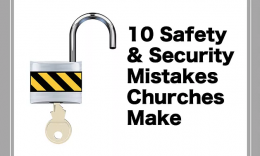Six Benefits of Camp Safety

A safety-first culture involves more than just rules or guidelines; it views safety expectations through a broader lens. It establishes an operational framework that outlines how your organization intends to protect the children in its care, address issues that undermine safety, reduce risk, and increase accountability. A safety-first culture starts at the top and requires leadership commitment to fostering transparency, open dialogue, and being proactive.
Here are six benefits to building a camp safety-first culture.
1. Creates an Unforgettable Experience
When safety is prioritized, campers feel secure. This allows them to try new things, broaden friendships, and develop independence, leading to a memorable experience and desire to return year after year.
2. Reduces Risk
Creating a safety culture helps reduce the rate of accidents, injuries, and abuse, which ensures a better experience. By working to minimize risk and provide the best outcome, you can reduce the cost of insurance, attract better workers, and provide parents peace of mind.
3. Builds Trust and Assurance
Building a safety culture demonstrates your commitment to transparency while establishing trust. It gives the highest assurance that you are doing everything you can to protect the kids in your care and shows you value the well-being of campers, staff, and families.
4. Improves Retention Rate
A safety culture is a big part of providing a high-quality experience that encourages families to return. When families have peace of mind, can give feedback, and are included in building a safe and strong camper community, they are more likely to return.
5. Establishes A Standard of Care
Camp organizations have a legal and moral obligation to provide a high standard of care. This involves protecting campers by minimizing the grey area when working with kids and youth. It is beneficial to ensure everyone is on the same page so that no one must interpret rules and guidelines subjectively.
6. Creates Effective Communication Channels
Communication is vital to every organization. A safety-first culture includes guidelines encouraging staff, volunteers, and families to voice concerns and report issues early. It ensures that sensitive safety topics are always confidential, feedback is taken seriously, and there is no retribution for reporting.
A safety-first culture should be active and vibrant, not merely captured in an outdated manual. It serves as the foundational framework for onboarding, training, daily operations, and child protection. When safety is not prioritized, it limits your camp’s ability to build trust, earn commitment, and encourage campers to return.
Here are some additional resources to learn more about establishing a safety-first culture.
Click here to learn more about the benefits of using secure mobile Express Check-In, children’s and youth check-in, and volunteer scheduling to help manage your events.
For more safety information, subscribe to the KidCheck blog or connect with us on X, Facebook, Pinterest, Instagram, and YouTube.
Photo by Nellie Adamyan on Unsplash


